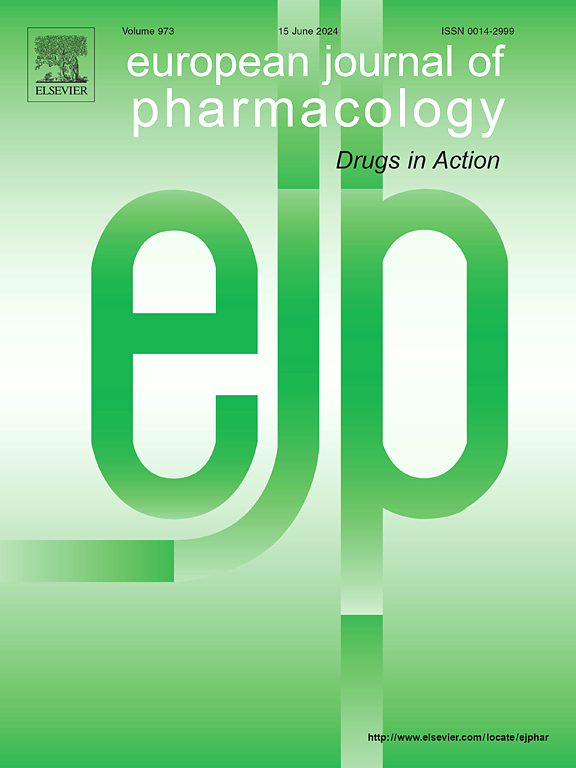蛋白激酶介导的棕榈酸对肝细胞自噬的抑制。
IF 4.2
3区 医学
Q1 PHARMACOLOGY & PHARMACY
引用次数: 0
摘要
脂肪变性的特点是肝细胞中游离脂肪酸(如棕榈酸(PA))的增加和肝脏中甘油三酯的积累。然而,细胞内自噬在PA积累诱导的肝毒性中的作用尚不清楚。因此,在本研究中,我们研究了PA对肝细胞自噬的影响及其潜在的作用机制。PA处理HepG2细胞诱导细胞内p62和LC3-II水平显著升高,提示自噬受到抑制。此外,通过GFP-RFP-LC3检测,PA抑制HepG2细胞的自噬通量。从机制上讲,PA通过蛋白激酶A (PKA)和蛋白激酶C (PKC)信号传导增加了LC3的Ser12和Thr29残基磷酸化,这是自噬抑制标志物。最后,PKA和PKC抑制剂恢复pa诱导的自噬通量抑制,减少细胞内脂质积累,并挽救HepG2细胞中脂质基因(如SREBP-1c)的表达改变。因此,我们的研究揭示了PA抑制肝细胞自噬的机制,为预防和治疗肝脂肪变性提供了潜在的治疗方法。本文章由计算机程序翻译,如有差异,请以英文原文为准。
Protein kinase-mediated inhibition of autophagy by palmitic acid in hepatocytes
Steatosis is characterized by an increase in free fatty acids, such as palmitic acid (PA), in hepatocytes and the accumulation of triglycerides in the liver. However, the role of intracellular autophagy in PA accumulation-induced hepatotoxicity is not clearly understood. Therefore, in this study, we investigated the effects of PA on autophagy in hepatocytes and its underlying mechanism of action. Treatment of HepG2 cells with PA induced a significant increase in intracellular p62 and LC3-II levels, suggesting inhibition of autophagy. Furthermore, PA inhibited autophagic flux in HepG2 cells, as monitored using GFP-RFP-LC3. Mechanistically, PA increased the phosphorylation of the Ser12 and Thr29 residues of LC3, which are autophagy inhibition markers, through protein kinase A (PKA) and protein kinase C (PKC) signaling. Finally, PKA and PKC inhibitors restored PA-induced autophagic flux inhibition, reduced intracellular lipid accumulation, and rescued the altered expression of lipogenic genes, such as SREBP-1c, in HepG2 cells. Thus, our study demonstrates the mechanism of autophagy inhibition by PA in hepatocytes and provides a potential therapeutic approach for preventing and treating hepatic steatosis.
求助全文
通过发布文献求助,成功后即可免费获取论文全文。
去求助
来源期刊
CiteScore
9.00
自引率
0.00%
发文量
572
审稿时长
34 days
期刊介绍:
The European Journal of Pharmacology publishes research papers covering all aspects of experimental pharmacology with focus on the mechanism of action of structurally identified compounds affecting biological systems.
The scope includes:
Behavioural pharmacology
Neuropharmacology and analgesia
Cardiovascular pharmacology
Pulmonary, gastrointestinal and urogenital pharmacology
Endocrine pharmacology
Immunopharmacology and inflammation
Molecular and cellular pharmacology
Regenerative pharmacology
Biologicals and biotherapeutics
Translational pharmacology
Nutriceutical pharmacology.

 求助内容:
求助内容: 应助结果提醒方式:
应助结果提醒方式:


